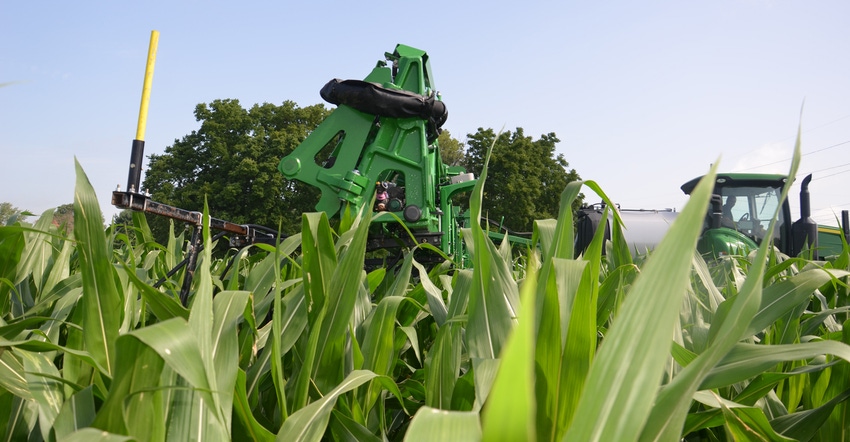April 26, 2021

Each state in the Midwest has environmental goals to meet to reduce the amount of nutrients finding their way to the Gulf of Mexico and causing hypoxia, impacting ocean life. In Indiana, the strong movement toward soil health by many growers is helping to meet that goal. Indiana is also blessed with a strong Indiana Conservation Partnership that provides technical support, advice and even cost-share support for growers to adapt practices more likely to reduce soil erosion and loss of nutrients into rivers and streams.
Ben Wicker, a farmer and executive director of the Indiana Agricultural Nutrient Alliance, says that predictive models developed by Purdue Extension and other agencies show Indiana is making progress toward its goal of cleaner water heading to the Gulf.
“There is still a gap, however,” Wicker says. “When we survey Indiana farmers, about three-fourths of them say they are using best management practices when it comes to nutrient management. That includes regular soil testing so they can use it as a guide for applying fertilizer.
“However, only about one-third of Indiana farmers say they have a nutrient management plan in place. That is what causes the gap. We need more growers to step up and put a plan on paper and follow it.”
Bridge the gap
The reason a nutrient management plan is so important is because it is usually built around the 4R’s of nutrient management, Wicker says. That includes applying the right rate of fertilizer and the right source in the right place at the right time.
For example, if you’re still fall-applying nitrogen, you may be losing more of it to leaching than you realize. Even if you can move toward saving the most vulnerable fields for spring application or sidedressing, if you feel you still need to apply some early due to workload, it can help reduce the amount of nitrogen subject to loss into the environment. It will also help you get better use of each dollar spent on fertilizer and increase yields at the same time.
Wicker believes Indiana took a big step in the right direction when it implemented the 4R Certification program in November. This program is designed for retail fertilizer outlets, and requires not only carrying out prudent practices, but documenting movement and application of fertilizer very carefully. So far, four retail dealerships impacting 110,000 acres have been certified. It’s a voluntary program. Wicker expects more outlets covering lots more acres to enroll and meet certification requirements soon.
As these dealerships are trained, they are in a better position to assist farmers in developing their own nutrient management plans, Wicker says. Indiana certified crop advisers and agronomists are also good sources of information if you’re ready to take the next step beyond soil testing. That’s committing a plan for nutrient management on paper and agreeing to follow it, Wicker says.
Soil testing is a great first step if you aren’t already doing it. But unless you utilize the results to guide applications and apply the right products in the right amounts where they’re needed, at the right time, you won’t reap the full value of soil tests. And Indiana likely will take longer to meet its goals related to environmental stewardship and reductions in the loss of nutrients headed down Indiana waterways.
You May Also Like




